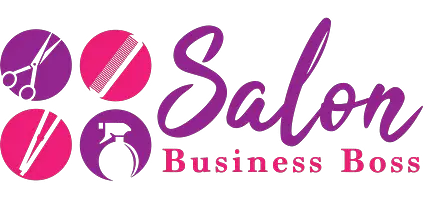To guarantee that your salon business will be successful, you’ll need to invest in great employees. Great employees will exemplify everything you believe in terms of customer service and skill. You will be able to build your brand and gain notoriety as an amazing salon if your employees are great. However, your employees will be a reflection of how well you train them. While some people may walk in and just “get it”, many won’t. Therefore, it is up to you to properly train them. Training doesn’t have to be boring. It doesn’t have to mean spreadsheets and digital presentations. It can be tailored to fit your style and your goals. Here are some easy techniques to help you train your employees in your hair salon business.
To train your employees in your salon business:
- Create your Employee Manual
- Solidify your Brand Identity
- Use Demonstrations
- Initiate Shadowing
- Create an Open-Door Policy atmosphere
- Conduct Reviews
- Plan Staff Meetings
- With these techniques at your disposal, training your employees will be painless. Keep reading below to get further information on how to train your hair salon employees.
Employee Manual 
Using your employee manual as a way to train your employees is extremely helpful. Especially if you already plan to have rules and guidelines for your salon. In your employee manual, you can include a variety of information. You will also have it organized in a useful way so that the information is easily accessible. In addition, you will be able to make sure that all employees receive the same basic information about your salon and your expectations. Some information to include in your employee manual include:
- Workplace Policies
- Code of Conduct
- Information on Tools/Technologies Used by Staff
- Attendance and Absenteeism
- Dress Code
- Compensation
- Time Off/Vacation
- Benefits
- Communication
All of the above items can be included in your employee manual. While it may seem like a big waste of time to write down so much information, you’ll appreciate the results. Once you complete your employee manual, you’ll be able to refer to it when issues arise at the salon. In addition, it will give you a great starting point for all questions that staff might have. I also want to give you some quick tips for creating your employee manual.
- Search the internet for employee manual templates
- Write in clear and simple language
- Don’t make assumptions
- Be prepared to make revisions
Brand Identity
When training your salon staff you’ll want to convey information about your brand. Your brand is anything about your business that serves to distinguish it from others. Many things can be part of your brand. Those things include:
- Your Logo
- A Symbol
- A Word
- A Phrase
- Your Mission
When teaching new staff about your brand identity, all of the above things may come up. Employees mustn’t feel distant when it comes to your salon brand. They must be able to take ownership of it. Through that ownership, they will be more likely to demonstrate actions that fall in line with your brand. Those actions could be remembering that the customer is always right. They could mean arriving early for appointments to make sure their stations are ready for clients. All of the conduct you’d want your employees to demonstrate can be attached to your brand.
I’ve worked for a company that had such a great brand identity that I felt proud to be an employee. I identified with the mission and was happy to serve my clients. You want your employees to feel the same. Here’s a quick tip for making sure that your employees identify with your brand. Be intentional about talking about the brand from the beginning. The more they hear about what makes your salon special, the more they will identify with it.
Demonstrations
Another great way to train your employees is by using demonstrations. While it will be useful to have an employee manual to refer back to, having demonstrations is also a great way to teach employees. Demonstrations can cover the following topics:
- Styling Techniques
- POS System
- Scheduling
- Answering Phones
- Maintaining Stations
- Dealing With Difficult Clients
- Keeping the Salon Clean
Providing demonstrations to your staff will ensure that you are covering more learning styles. Those who prefer to read will be able to learn from the employee handbook. Those who do better with visual learning will love demonstrations. In addition, with demonstrations, you can cover so many topics. One tip for using demonstrations is this. Allow more senior employees to do the demonstrations. It gives them a leadership role and makes the process look more democratic.
Shadowing

Shadowing is another education technique for your visual learners. By allowing new staff to shadow your more senior staff, you can support an ecosystem of learning. New staff will be able to see a “day in the life”, and your senior staff will have the ability to hone their skills by teaching someone else. This is a win-win situation for you. Allowing your new staff to participate in shadowing also gives them the ability to see what their duties look like in real-time. Real-time and real customers offer a different experience than demonstrations can provide.
To make sure the shadowing process goes well, follow these steps:
- Pick employees that demonstrate skills you want your new employee to emulate
- Provide perks to the staff who volunteer for shadowing opportunities
- Debrief the new employees on what they saw during shadowing
- Within reason, allow the new employee to practice a task with a client at the moment
Here’s a little more detail about a few of the steps above. You want to make sure you’ve chosen a great employee for your new employee to shadow. If you pick an employee who doesn’t exemplify your brand, you’ll be making a big mistake. You’ll be demonstrating to the new hire that this kind of behavior is ok. Do yourself a favor and reward a great employee with a perk for showing new staff the ropes.
Debriefing the employee is very important for this type of training. This is because you will be able to get a summary of what the employee saw, answer any questions, and give insight into the “why” for some of your protocols. Since you are the boss, it is unlikely that you’ll be hovering around the shadowing session. So you’ll be able to learn a lot about what your employees do when you aren’t around from this new hire. In addition, you’ll also be able to stop any bad behavior early before it sets in. Moreover, you’ll be able to support your new employee in their learning process.
Open Door Policy
One important thing to remember is that learning never ends. There are always going to be new situations and emergencies that come up during a day in the salon. Making sure your new employees know this is very important. You don’t want them to feel like once training is over they are on their own. You want them to feel like they have your ear whenever they need it. This is why the open-door policy is such a great tool for training your employees.
The open-door policy means you make yourself available anytime employees have questions. It means that you aren’t frustrated by questions but that you welcome them. It also means that you take your time answering questions so that employees feel valued. All of these things are important for learning and training.
Another reason why the open-door policy can be helpful is that it allows for good communication in your salon. As the boss, you can be somewhat removed from the intricacies of the salon. This is understandable. You are in charge of a lot of different things and may miss details from time to time.
By allowing an open door policy, you greatly improve your ability to know what’s going on in the salon. You will hear about staff issues, client concerns, and possibly hear some good ideas for improving service. You want your staff to feel comfortable sharing information with you. This will make it easier for you to make changes that improve your business. One quick tip concerning the open door policy. Hang a sign on your door that encourages people to come in. This way staff will know when you shouldn’t be disturbed.
Reviews

Some employees hate reviews. They see them as a time of year where all of their flaws are put out in the open. But that isn’t the goal of reviews. Reviews are meant to offer staff kudos on good work, growth opportunities, and plans for the future. If done right, reviews can also act as a time for training. Some ways to make reviews useful for training are by doing the following:
- Offer clear and concise feedback
- Use real-life examples to base your comments on
- Create a plan for further development with the employee
- Allow for a dialogue between you and the employee
- Summarize the next steps
- Document everything
The review can take whatever format you’d like. However, you should make sure that you document everything. You want to make sure the employee feels comfortable with the process and the outcome. You’ll want to give them a copy of the review so that they can keep it for their records also. While you will have the freedom to format the review, be sure to keep it uniform across all employees. This will keep the feedback consistent and help you to follow a routine for engaging your employees in professional development.
Another important aspect of using the review as a way to train your employees is to ground comments in real-life examples. If you want your employee to improve in an area, let them know you are basing your feedback on something you noticed. Bring everything back to an example and they are less likely to feel defensive.
It also allows you to demonstrate that you believe in learning as you go and not micro-managing. A good employee will likely bring in examples of times they did excellent work. Allow for this type of sharing to happen at the beginning. You can then follow up with your feedback. And end the review with more strengths-based comments. That way the review is a celebration of good work and an opportunity to grow. You want your employees to grow. That’s why reviewing them is so important.
Finally, work with the employee to create a development plan. Some techniques for further development could be more shadowing. They could be taking an online course on a specific topic. It could also mean more one-on-one time with the boss to get more targeted support. Whatever is decided, make sure the employee has a say as well.
They know what will work best for their learning style. Make them the expert on how they learn best. You can fill in the blanks with ways your can support them. Here’s a quick tip on creating a professional development plan for your employee. Ask the employee what they are interested in working on. This can start the conversation concerning the plan. It will keep the conversation flowing and will reduce any defensiveness.
Staff Meetings
Staff meetings are another great way to train your employees. Getting everybody together at the same time is always difficult. There are issues of scheduling and whether there are clients to serve. When you decide to implement staff meetings, you can bypass all of those barriers. With regularly scheduled staff meetings, your employees will have the ability to obtain a ton of information at the same time. Because of this, staff meetings are an optimal time for training.
Using some of the techniques above during staff meetings will be easy. For example, during one staff meeting, you could focus on going over aspects of the employee manual. During another, you could have a demonstration that you feel is necessary for the entire staff. In addition, you can utilize other employees to speak on issues that they’ve noticed in the team. This offers you the ability to speak on these issues as a training opportunity. While staff meetings are an easy way to get a lot of information to your staff, you want to be careful not to overload them.
Check out how to hire THE BEST staff HERE.
A staff meeting covering too many topics is ineffective. You want to be clear and concise during these meetings. You want to allow time and space for questions. And, you want to make sure you aren’t lecturing the staff. This format will make it difficult for them to pay attention. Keep things open and allow your more seasoned employees to make contributions. One quick tip you can use for making your staff meetings effective is creating an agenda. It doesn’t need to last long. But it should probably consist of a standard format that you always follow. This will make it so everyone knows what to expect. It will also make it easy for other employees to run the meeting as necessary.
Training your employees effectively will ensure that your salon runs smoothly. Hopefully, the techniques included here can get you started on the right track. Remember, training is not a one-time thing. It is a process. Your staff will constantly need to learn new information. It’s up to you to step in to provide it.
Related Question

What can I do to commemorate the training process for new employees?
Some salons commemorate their training process by providing new employees with a certificate. The certificate will indicate the number of hours of training and be presented after the onboarding period.
Looking to start your own Salon? Get the documents you need to get organized and funded here.
Please note: This blog post is for educational purposes only and does not constitute legal advice. Please consult a legal expert to address your specific needs.

About the author. Entrepreneur and Salon Business Fan.
Hi! I am Shawn and I am a happy individual who happens to be an entrepreneur. I have owned several types of businesses in my life from a coffee shop to an import and export business to an online review business plus a few more and now I create online salon business resources for those interested in starting new ventures. It’s demanding work but I love it. I do it for those passionate about their business and their goals. That’s why when I meet a salon business owner, I see myself. I know how hard the struggle is to retain clients, find good employees and keep the business growing all while trying to stay competitive.
That’s why I created Salon Business Boss: I want to help salon business owners like you build a thriving business that brings you endless joy and supports your ideal lifestyle.


